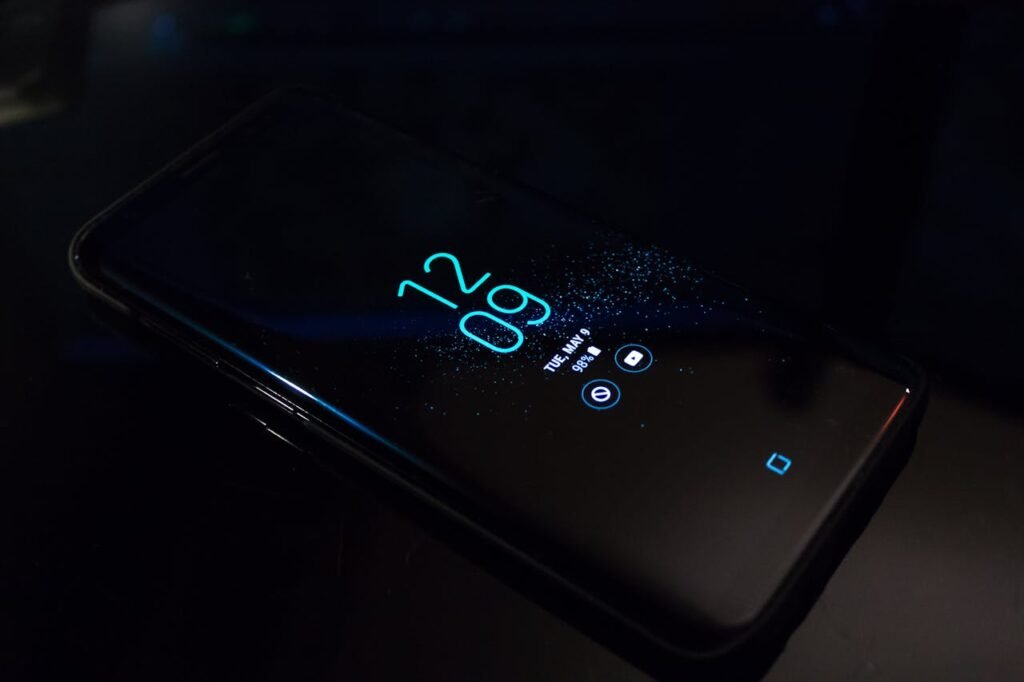The Complete Guide to Website Security Maintenance: Protect Yourself Against Digital Vulnerabilities

Website Security Maintenance Learn more [elementor_shortcode id=”1147″] The Importance of Security Maintenance In today’s digital landscape, websites are critical assets for any business. However, they are also prone to cyberattacks that can compromise sensitive data, erode user trust, and harm a company’s reputation. Website security maintenance is a crucial preventive measure to ensure a secure and trustworthy environment. Steps to Maintain Your Website’s Security Data Protection: Prevents unauthorized access to confidential information. Enhanced Performance: Fixes vulnerabilities and errors that slow down the site. User Trust: Visitors feel safe interacting with a well-protected site. Regular Updates: Ensure platforms and plugins are always updated. Frequent Backups: Implement automated backups to prevent data loss. Continuous Monitoring: Use tools to detect and resolve threats in real time. What is Website Security Maintenance? Website security maintenance is a comprehensive process designed to protect a website from vulnerabilities and digital threats. This service ensures continuous functionality while safeguarding user data and experience. Key components of security maintenance Regular updatesEnsure that the content management system (CMS), plugins, and themes are updated to their latest versions, closing potential security gaps. Security scansIdentify weaknesses through regular audits and address them proactively. Continuous monitoringMonitor site activity in real-time to detect and prevent suspicious behavior. BackupsAutomate regular data backups to facilitate recovery in the event of unforeseen incidents. Schedule a Consultation Schedule your consultation through Calendly and discover how we can take your brand to the next level with personalized and effective strategies. Schedule Your Consultation Key Elements of Security Maintenance Website security maintenance consists of essential practices that safeguard both the site’s integrity and user experience. Below are the key elements that ensure optimal security. Software and Plugin Updates Keeping content management platforms, such as WordPress, updated is critical to preventing exploits caused by known vulnerabilities. For example, an outdated WordPress version can expose sensitive data due to documented security gaps. Vulnerability Scans Regular scans help identify potential threats before they are exploited. Tools like Sucuri perform automatic audits, detect malware, and offer real-time prevention systems. How does Sucuri work? Scans the site to identify infected files. Continuously monitors for suspicious activity. Provides detailed reports with specific solutions to resolve issues. Regular Backups Backups are essential for restoring site functionality after an incident. Implementing automated backups on external servers ensures that data remains secure, even if the primary server fails. How to implement them? Use services like UpdraftPlus to schedule regular backups. Leverage platforms such as Google Cloud or Amazon S3 for secure storage. These elements not only protect your site but also provide a reliable experience for users. Benefits of Security Maintenance Protection against hackers Proper security maintenance prevents unauthorized access, data theft, and malicious attacks such as ransomware. This safeguards sensitive information and avoids costly business disruptions. Example: Brute force attacks, common on unsecured websites, can be mitigated through regular updates, two-factor authentication, and continuous monitoring. Improved SEO Google prioritizes secure websites in its rankings. Implementing SSL certificates, regular audits, and resolving technical vulnerabilities contribute to higher SEO scores, increasing site visibility and attracting more organic traffic. Schedule a Consultation Schedule your consultation through Calendly and discover how we can take your brand to the next level with personalized and effective strategies. Schedule Your Consultation How to Implement a Security Maintenance Plan Implementing an effective security maintenance plan requires structured planning and the right tools. Below are the key steps to ensure your website’s security. Defining responsibilities The first step is to decide whether maintenance will be managed internally or by an external provider. Internal: Ideal for businesses with skilled technical teams.Advantages: Greater control over operations and customization.Disadvantages: Requires time, technical expertise, and resources. External: Hiring a specialized provider like Bellum Tempus ensures professional management.Advantages: Quick and effective solutions with less burden on the internal team.Disadvantages: Additional cost and less direct control. Tip: Assess your internal needs and capabilities before deciding. Key tools Using specific tools is essential for keeping your site secure. Recommended options include: Wordfence: A robust plugin for WordPress that provides real-time monitoring and an integrated firewall.Best for: Small to medium-sized businesses with WordPress sites. SiteLock: A comprehensive service that includes malware scanning, automatic removal, and CDN protection.Best for: Larger businesses with more complex needs. Comparison: Small businesses: Tools like Wordfence are affordable and user-friendly. Large businesses: Services like SiteLock offer advanced protection and professional support. Costs and Return on Investment Investing in website security maintenance is a strategic move that protects digital assets and ensures optimal performance. Below, we outline average costs and their contribution to generating positive ROI. Average Costs The cost of security maintenance depends on the site’s complexity and the specific needs of the company. Small or personal websites: Typical range: $50 to $150 per month. Features: Basic tools such as security plugins and regular backups. Medium-sized or business websites: Typical range: $150 to $500 per month. Features: Continuous monitoring, security audits, and managed services. Large or e-commerce websites: Typical range: $500 to $2,000+ per month. Features: Advanced protection, tailored services, and 24/7 support. [elementor_shortcode id=”1156″] [elementor_shortcode id=”1162″]
How to Choose Colors for Your Website: A Comprehensive Guide to Enhance Your Brand

How to Choose Colors for Your Website Learn more [elementor_shortcode id=”1147″] The Importance of Choosing the Right Colors The choice of colors on your website is not merely an aesthetic decision; it is a strategic move that shapes user perceptions, boosts engagement, and reinforces your brand identity. This guide will help you understand the fundamentals of selecting a color palette that aligns with your goals and resonates with your audience. How Colors Impact User Perception Colors directly influence how users perceive your website and, by extension, your brand. Warm tones like red and orange convey energy and excitement, while cool tones such as blue and green evoke trust and calmness. By selecting an appropriate palette, you can steer visitors toward desired actions and optimize conversion rates. The Connection Between Colors and Brand Identity A cohesive color scheme not only enhances visual appeal but also strengthens your brand identity. By integrating brand-defining colors into your web design, you can increase recognition and stand out from competitors. Basic Principles of Color in Web Design Understanding Color Theory Effective web design relies on mastering the color wheel, a tool that organizes colors and helps create balanced combinations. Monochromatic schemes provide a clean and cohesive look by using variations of a single color, while complementary colors introduce contrast by pairing opposites. Similarly, analogous schemes use adjacent colors to create a seamless and harmonious flow. These principles play a crucial role in visual strategies, ensuring that color choices align with branding goals and support other key elements, such as marketing campaigns, to deliver a unified and impactful experience. The Psychology of Color Colors have the power to evoke specific emotions and associations. For example, red conveys passion and energy, making it ideal for grabbing immediate attention. Blue fosters trust and calmness, commonly used in industries like technology or finance. Green symbolizes sustainability and growth, often favored by eco-conscious brands. Strategically integrating colors into the overall web design ensures a cohesive narrative that aligns with the brand’s values and resonates with its audience. Schedule a Consultation Schedule your consultation through Calendly and discover how we can take your brand to the next level with personalized and effective strategies. Schedule Your Consultation Monochromatic Scheme A monochromatic scheme uses variations of a single color, including different shades, tints, and tones. This approach is ideal for creating a clean, sophisticated look that ensures visual consistency across the website. Benefits: Simplicity: Directs focus on content without overwhelming distractions. Elegance: Creates a balanced, modern aesthetic. For example, using shades of blue for a corporate website conveys trust and professionalism. This scheme is often applied in creative advertising design projects where visual uniformity is key to strengthening brand identity. Complementary Scheme An analogous scheme combines colors that are adjacent on the color wheel, such as green, yellow, and yellow-green. This creates a sense of continuity and harmony, resulting in a visually pleasing design with subtle differentiation between elements. Benefits: Visual harmony: Ideal for websites aiming to convey calmness and flow. Gentle differentiation: Highlights sections without disrupting visual coherence. For instance, a website for natural products might use this scheme to reflect a connection with nature and emphasize sustainability and balance. Choose a Primary Color The primary color is the cornerstone of your brand’s visual identity and serves as the foundation for building an effective palette. This color should resonate with your audience and reflect your brand’s core values. For instance: Red for energetic and passionate brands. Blue to convey trust and professionalism. Green for eco-friendly and nature-focused brands. The choice should align with color psychology to ensure your visual messaging supports your brand’s mission. For example, selecting a primary color that matches your logo helps reinforce your brand identity throughout the website. Schedule a Consultation Schedule your consultation through Calendly and discover how we can take your brand to the next level with personalized and effective strategies. Schedule Your Consultation Add Secondary Colors After determining the primary color, secondary tones complement and balance the design. These colors should contrast with the primary color to improve readability and draw attention to key elements like buttons or headers. Visual contrast is essential to highlight important areas without overwhelming the design. For example, pairing a primary blue with secondary tones like orange or yellow can create a professional and engaging look while ensuring key elements stand out. Secondary colors should also integrate seamlessly with other visual elements, such as marketing campaigns, to maintain consistency across all platforms. Lack of Contrast One of the most common mistakes when choosing colors for a website is failing to ensure proper contrast between key elements, such as text and background. Insufficient tonal differences can compromise readability, frustrating users and negatively impacting their browsing experience. For instance, pairing light gray text with a white background makes content difficult to read, especially on mobile devices or in low-light conditions. This not only reduces accessibility but can also discourage users from engaging, leading them to leave the site prematurely. Enhance your design: Ensuring adequate contrast is crucial to providing an optimal user experience. By applying accessible design principles, such as testing color combinations across various devices and environments, you can achieve a visually impactful and user-friendly result. Explore practical examples and functional solutions through our digital solutions. [elementor_shortcode id=”1156″] [elementor_shortcode id=”1162″]
Unlocking Business Success: The Role of Mobile Optimization in Website Design

Unlocking Business Success Learn more [elementor_shortcode id=”1147″] The Role of Mobile Optimization in Website Design With the exponential growth in mobile device usage, mobile optimization has become a cornerstone of modern web design. Currently, more than 60% of organic search traffic originates from mobile devices, highlighting the importance of implementing strategies tailored to these platforms. This approach not only enhances user experience but also strengthens critical elements like the structure and functionality of a website. Insights into these aspects are evident in the work of web design contractors who lead the way in addressing such challenges effectively. As consumer preferences evolve toward faster and more personalized digital experiences, businesses that fail to optimize their websites for mobile risk losing competitiveness and market reach. What Is Mobile Optimization? Mobile optimization is an advanced process that adjusts a website to ensure smooth navigation and optimal functionality on mobile devices. Unlike mobile-friendly design, which merely ensures basic visibility and usability on smaller screens, mobile optimization focuses on enhancing the user experience by adapting every aspect of the website, from load speed to content layout. Mobile-friendly design, on the other hand, is a more basic solution. It ensures the website is accessible and its design remains intact but does not dynamically cater to the specific needs of mobile users. Content adaptability and responsive design are critical components of mobile optimization. A responsive design automatically adjusts the content and structure of the site to fit various screen sizes, enhancing the browsing experience and encouraging users to engage more deeply with the content, ultimately driving conversions and improving the overall performance of the website. Schedule a Consultation Schedule your consultation through Calendly and discover how we can take your brand to the next level with personalized and effective strategies. Schedule Your Consultation Benefits of a Mobile-Optimized Website Enhanced User Experience Mobile-optimized websites provide smoother navigation and faster loading times, significantly improving the user experience. This is crucial, as a positive experience reduces bounce rates and increases visitor interaction with the site’s content. Responsive design ensures that every element of the website adjusts intuitively to different screen sizes, making it easier for users to find what they are looking for. Improved SEO Mobile optimization is essential for search engine rankings. Search engines like Google prioritize websites that deliver a proper mobile experience, significantly improving their visibility in search results. A well-structured optimized website ensures that both content and structure align with search engine standards. Increased Conversions A mobile-optimized site boosts conversion rates by simplifying the shopping experience for users. Studies show that consumers are more likely to complete a transaction on fast, user-friendly websites. This approach allows businesses to maximize commercial outcomes by turning visitors into loyal customers. How to Optimize Your Website for Mobile Simplifying Navigation Simplified navigation is a cornerstone of mobile optimization. Menus should be intuitive and easy to use, avoiding unnecessary or complicated elements like Flash-based animations, which are incompatible with most mobile devices. Instead, opt for simple dropdown menus and clearly labeled buttons to efficiently guide users through your site. Implementing Responsive Design Responsive design ensures that your website is both visually appealing and functional across all screen resolutions. This involves using specific “breakpoints” to adapt the site’s layout for various screen sizes, from smartphones to tablets and desktops. For example, a layout might adjust to a 320px width for mobile devices, while a 768px breakpoint optimizes the view for tablets. This approach enhances accessibility and improves user experience. Optimizing Images and Media Images and media must be optimized to avoid slowing down the site on mobile devices. Tools like TinyPNG or ImageOptim can compress file sizes without compromising quality. Ideal image sizes depend on the design but should generally not exceed 150KB to ensure fast loading times. Using Mobile-Friendly Forms Forms designed for mobile use should be simple, with fewer fields to fill out. Buttons should be touch-friendly, visible, and easy to tap, with a minimum size of 48×48 pixels as recommended for usability. This approach makes it easier for users to interact and reduces friction when completing forms. Schedule a Consultation Schedule your consultation through Calendly and discover how we can take your brand to the next level with personalized and effective strategies. Schedule Your Consultation Common Mistakes to Avoid Intrusive Pop-ups A frequent mistake in mobile optimization is using intrusive pop-ups. These elements not only disrupt the user experience but can also be penalized by search engines. Instead of annoying pop-ups, opt for discreet banners or embedded messages that don’t hinder navigation on mobile devices. Hard-to-Read Typography Typography selection plays a critical role in ensuring a smooth mobile experience. Fonts that are too small or overly complex make reading difficult on small screens, leading to user frustration. It’s essential to use a minimum font size of 16px and ensure enough contrast between text and background to improve readability. Lack of Testing on Various Devices A major mistake is neglecting thorough testing across different mobile devices and browsers. Each device might render the design differently, potentially causing display issues. To ensure seamless functionality, test your site on multiple resolutions and operating systems. Additional insights on effective strategies are available on the main Bellum Tempus website, emphasizing the significance of testing in web projects. [elementor_shortcode id=”1156″] [elementor_shortcode id=”1162″]
What is the Best Way to Find a Contractor

What is the Best Agency of Marketing Learn more [elementor_shortcode id=”1147″] Why Choose Bellum Tempus Why Choose Bellum Tempus Expertise and Experience: Bellum Tempus cuenta con un equipo de profesionales altamente capacitados con amplia experiencia en marketing digital y desarrollo web. Comprendemos las complejidades de cada proyecto, asegurando que cada solución que ofrecemos cumpla con los más altos estándares de calidad. Precision and Attention to Detail: Crear estrategias digitales efectivas requiere precisión y una meticulosa atención al detalle. Nuestro equipo se enorgullece de garantizar que cada aspecto de nuestros servicios, desde la creación de campañas hasta el diseño de contenido y el desarrollo web, se ejecute con precisión para asegurar resultados duraderos y el éxito de tu marca. Why Choose Bellum Tempus Why Choose Bellum Tempus Expertise and Experience: Bellum Tempus cuenta con un equipo de profesionales altamente capacitados con amplia experiencia en marketing digital y desarrollo web. Comprendemos las complejidades de cada proyecto, asegurando que cada solución que ofrecemos cumpla con los más altos estándares de calidad. Precision and Attention to Detail: Crear estrategias digitales efectivas requiere precisión y una meticulosa atención al detalle. Nuestro equipo se enorgullece de garantizar que cada aspecto de nuestros servicios, desde la creación de campañas hasta el diseño de contenido y el desarrollo web, se ejecute con precisión para asegurar resultados duraderos y el éxito de tu marca. Schedule a Consultation Schedule your consultation through Calendly and discover how we can take your brand to the next level with personalized and effective strategies. Schedule Your Consultation Why Choose Bellum Tempus Expertise and Experience: Bellum Tempus cuenta con un equipo de profesionales altamente capacitados con amplia experiencia en marketing digital y desarrollo web. Comprendemos las complejidades de cada proyecto, asegurando que cada solución que ofrecemos cumpla con los más altos estándares de calidad. Precision and Attention to Detail: Crear estrategias digitales efectivas requiere precisión y una meticulosa atención al detalle. Nuestro equipo se enorgullece de garantizar que cada aspecto de nuestros servicios, desde la creación de campañas hasta el diseño de contenido y el desarrollo web, se ejecute con precisión para asegurar resultados duraderos y el éxito de tu marca. Why Choose Bellum Tempus Expertise and Experience: Bellum Tempus cuenta con un equipo de profesionales altamente capacitados con amplia experiencia en marketing digital y desarrollo web. Comprendemos las complejidades de cada proyecto, asegurando que cada solución que ofrecemos cumpla con los más altos estándares de calidad. Precision and Attention to Detail: Crear estrategias digitales efectivas requiere precisión y una meticulosa atención al detalle. Nuestro equipo se enorgullece de garantizar que cada aspecto de nuestros servicios, desde la creación de campañas hasta el diseño de contenido y el desarrollo web, se ejecute con precisión para asegurar resultados duraderos y el éxito de tu marca. [elementor_shortcode id=”1156″] [elementor_shortcode id=”1162″]

